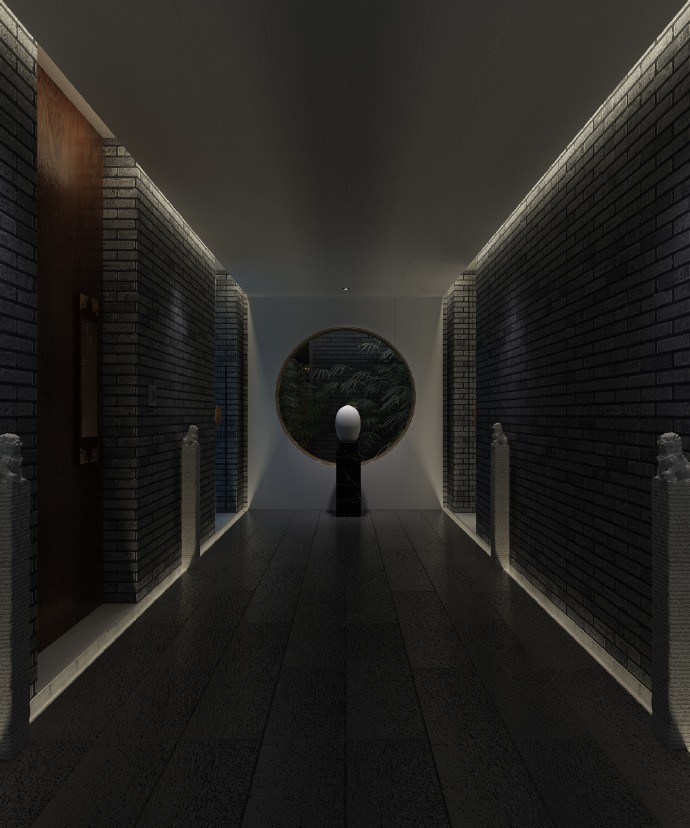Christ Resurrection Church Cino Zucchi Architetti + Zucchi - Partners
2012-11-19 00:00
架构师提供的文本描述。当时的环境(米兰的一个工业郊区)和现有的建筑(一座仓库改建的教堂大厅,由一群工人牧师在1960年代建造)产生了一个正式的限制项目,它解决了当代朝拜宫这一困难的主题,而不沉溺于结构上的展示或对具象自由的追求。
Text description provided by the architects. The context (an industrial suburb of Milan) and the existing building to be replaced (a warehouse converted church-hall built by a group of worker priest in the 1960s) generated a formally restrained project, which tackles the difficult subject of a contemporary house of worship without indulging in structural exhibitionism or in the search for figurative freedom.
Courtesy of Cino Zucchi Architetti
竞争情况简介所要求的规格以及现有建筑和开放空间所施加的限制导致了一种必要的紧凑空间解决方案的配置,而这种解决方案必须尊重其场地。该项目的目的是最大限度地发挥教堂与城市之间的关系,以及与其花园和运动场之间的关系。教堂和邻近房间的体积被掏空,这样就可以为社区建立一个有盖的接待区,面向南边的街道,而在西边则是沿着足球场的篱笆。后部现有的运动场保持其形状和大小。街道的立面、尖塔、新的街道前栅栏和辅助元素构成了“拥抱”教堂墓地的凹形轮廓,充分利用了城市对角的长景。
The specifications requested by the competition brief and the limitations imposed by the existing building and open spaces led to the configuration of a necessarily compact spatial solution, which had to respect its site. The project aims to maximise the relationship between the churchyard and the city and with its garden and sports field. The volume of the church and of the adjacent rooms is hollowed out in such a way as to create a covered reception area for the community towards the street to the south and on the west towards the hedges that line the football field. The existing sports field around the back retains its shape and size. The street façade, steeple, new street-front fence and auxiliary elements make up the concave profile that ‘embraces’ the churchyard, exploiting the long diagonal view of the façade from the city.
Courtesy of Cino Zucchi Architetti
从维格瓦诺(Vigevano)胡安·卡拉穆埃尔(Juan Caramuel)教堂的门面(著名的“阿尔克特图拉民间建筑”的作者)到米兰保罗·乔维奥(Paolo Giovio)的吉奥·庞蒂(Gio Ponti)教堂,前面的Via Pisa完美地反映了“风帆式”正面的悠久传统。新的前沿占据了附近演讲的屋檐线,两侧之间的凹角在入口上方形成了一个遮蔽区域,并形成了新的教堂墓地空间。
The front onto Via Pisa perfectly reflects the long tradition of “sail-style” facades, from the seventeenth century façade of Juan Caramuel’s church in Vigevano (author of the renouned “Arquitectura civil recta y obliqua”) to Gio Ponti’s church in Via Paolo Giovio in Milan. The new front takes the thread of the eaves of the nearby oratory; the concave angle between the two sides creates a sheltered area above the entrance and gives shape to the new churchyard space.
Courtesy of Cino Zucchi Architetti
教堂大厅的周围是一个下半身,上面盖着一个倾斜的屋顶,里面有通往教区社会生活的空间:牧师办公室、会议室、圣礼室和中庭,与教堂礼堂相对应的是一间大型地下活动室。如果空间的总体布局完全是传统的,那么准确地确定相关区域、房间比例、照明、仪式空间和陈设的简单设计,就表示了对当代基督教社区的欢迎空间的寻找,在那里,世界上的沉思和活动、日常生活和神圣感不是分开的时刻,而是一种统一感觉的各个方面。构成教区综合体的新环境的布局旨在最大限度地扩大它们与其开放空间之间的关系,使它们开放给构成教区生活关键要素的团聚时刻。
Surrounding the main volume of the church-hall a lower body covered with a pitched roof houses the spaces destined to the social life of the parish complex: priest’s offices, meeting rooms, the sacristy and the atrium to a large underground event room in correspondence to the liturgical hall. If the general layout of the spaces is entirely traditional, an accurate determination of areas of relevance, the proportions of the rooms, lighting, the simple design of the liturgical space and furnishings express the search for a welcoming space for a contemporary Christian community, where contemplation and activity in the world, daily life and a sense of the sacred are not separate moments, but aspects of a unified feeling. The layout of the new environments which form the parish complex aims to maximise their relationship with its open spaces, opening them up to moments of togetherness which constitute a key element of its life.
Courtesy of Cino Zucchi Architetti
这个礼拜场所的内部空间是和平的,神秘的,但不是戏剧的,日常的,但不是平淡的。它的建筑是对历史教堂的两种主要类型学范式的当代诠释:纵向的单一大厅,以长老为中心的轴心,以及聚集在祭坛周围的中央或椭圆形的计划。在许多变体中,这两种空间形式经常结合在许多历史的例子中,从布鲁内尔斯基的帕齐教堂到维格诺拉的Via Faminia的S.Andrea-在那里,圆形或椭圆形的穹顶设置在一个简单的矩形卷上-直到瓜里尼的几个晚期巴洛克式的例子。室内建筑还与两个相反的比喻矩阵产生了共鸣:方济会和多米尼加教堂,未装饰的带有暴露屋顶结构的大厅,以及反改革时期壁画教堂的包围穹顶。
The interior space of this place of worship is meant to be peaceful, mystical but not theatrical, daily but not prosaic. Its architecture is a contemporary interpretation of the two major typological paradigms of historic churches: the longitudinal single hall, with an axis centred on the presbytery, and the central or oval plan gathered around the altar. In their many variations these two spatial forms are often combined in many historical examples, from the Pazzi Chapel by Brunelleschi, S. Andrea on the Via Flaminia by Vignola - where a circular or elliptical dome is set on a simple rectangular volume - up to several late baroque examples by Guarini. The architecture of the interior resonates also with two opposite figurative matrices: the Franciscan and Dominican churches, undecorated halls with exposed roof structures, and the enveloping domes of the frescoed churches of the counter-Reformation.
Courtesy of Cino Zucchi Architetti
在教堂墓地和内部大厅之间有一个较低的横向空间,它既是一个前厅,也是洗礼字体的所在地,其相对于祭坛的位置回到了它在古代所占据的位置。
Between the churchyard and the interior hall there is a lower transverse space, which serves as a vestibule as well as being the home of the baptismal font, whose location opposite to the altar harks back to the position it occupied in ancient times.
Courtesy of Cino Zucchi Architetti
教堂大厅的天花板以厚厚的横肋的节奏排列为特色,其中包含了天窗。两个白色的灰泥“帆”或“翅膀”-从墙壁上伸出枝条,形成一个空间拥抱;后面墙上的一个大天窗从北方的长老会上空照射着阳光。外立面有一系列等尺寸但不同材质的垂直板:白色特兰尼石、灰色塞雷纳石、氧化锌片、丝网玻璃。它们的节奏、位置和数量根据太阳的方向、内部空间的质量以及与城市环境的关系而变化,产生了一种二维的装饰图案,在更大胆的体积表述中起到了更好的纹理作用。
The ceiling of the church hall features the rhythmical alignment of thick transverse ribs that contain the skylights. Two white stucco “sails” or “wings” – branch out from the walls to generate a spatial embrace; a large skylight on the back wall carries daylight over the presbytery from the north. The outer facades are faced with an array of vertical slabs of equal dimension but different materials: white Trani stone, Grey Serena stone, oxidized zinc sheets, silkscreened glass. Their rhythm, position and quantity changes according to sun orientation, quality of internal spaces and relationship with the urban setting, generating a bi-dimensional decorative pattern which acts as a finer texture in respect to the bolder volumetric statement.
Courtesy of Cino Zucchi Architetti
即使计划中的神圣家具和法国艺术家Hélène Delprat的艺术作品尚未完成,教堂也已被社区完全采纳,该社区以各种私人和公共时尚使用其房舍,这证实了该设计适合于当代神圣空间的成功。
Even if the planned sacred furniture and the artwork by the French artist Hélène Delprat are not yet completed, the church has been fully adopted by the community which uses its premises in a variety of private and public fashions, confirming the success of the design moves apt for a contemporary sacred space.
Courtesy of Cino Zucchi Architetti
 举报
举报
别默默的看了,快登录帮我评论一下吧!:)
注册
登录
更多评论
相关文章
-

描边风设计中,最容易犯的8种问题分析
2018年走过了四分之一,LOGO设计趋势也清晰了LOGO设计
-

描边风设计中,最容易犯的8种问题分析
2018年走过了四分之一,LOGO设计趋势也清晰了LOGO设计
-

描边风设计中,最容易犯的8种问题分析
2018年走过了四分之一,LOGO设计趋势也清晰了LOGO设计








































































